I grew up as part of a stereotype. That stereotype relates to the English county of my birth – Essex. As a boy in the early 1980s, being from Essex meant that I was able to enjoy supporting the best cricket team in the land. Their success led to a lifelong obsession. Now a resident on the other side of the Atlantic, one of the first things I do every morning is check the cricket score. That will never change. However, as the 80s progressed, Thatcherism began to dominate Britain and one cannot really talk about Essex without mentioning those years and that political current. Essex became synonymous with all the worst aspects of that most divisive of periods: vacuous avarice, self-centred aspirationalism, and the promotion of the individual over the society.
No character summed this up more effectively than comedian Harry Enfield’s odious character Loadsamoney. I am not sure if it was ever clear that the fictional plasterer, obsessed with both the amount of money he earned and making sure everyone else knew how much he had, was specifically from Essex, but the inferences were easily made. The character was a joke, and a good one, but in hindsight, what was not really so funny were the other stereotypes about the people of the county. “Essex Man” was the stupid embodiment of all those Thatcherite values. Over the years, I have lost count of the times someone has made some crack about me being from that county even though for much of my life my Colchester accent sounded more akin to someone from the neighbouring county of Suffolk than someone from Chelmsford or Southend-on-Sea. (Don’t laugh, but despite being an English teacher for many years, it was not until I was well into my forties that I realised the past tense of “show” was not pronounced “shew”. Fortunately, my use of “snew” rather than “snowed” disappeared much earlier.)
However, the “Essex Man” badge is nothing when compared to the meanness of the “Essex Girl” label that reduced the women of the county to, in the words of the Oxford English Dictionary definition, “unintelligent, materialistic, and promiscuous”. The stream of jokes through the 1990s were as continuous as they were grotesque.
Even all these years later, the stereotypes have not entirely gone away. As Southend-on-Sea playwright Sadie Hasler noted in a 2017 interview with the BBC, “You can’t hear the word Essex without having a cognitive flash of all the stereotypes.” This is not helped by the continuing broadcast of the dreadful reality TV programme The Only Way is Essex, known to many as TOWIE, and now in its thirtieth(!) season. This is a show, which Tim Burrows in an excellent article for the Guardian on the county’s reputation described as having “refined the Essex caricature into an extravagantly vapid parody of itself”. Perhaps the only good thing to result from the programme is Chris Pratt’s hilarious impression of the most ubiquitous Essex accent on the Graham Norton Show.
At this point, you might be asking what all this has to do with photography. The answer might be nothing beyond this columnist’s grumpy reminisces of his child and young adulthood, but I think it helps set the scene for us to see that there is far more to Essex than this enduring nonsense. There is far more of visual interest to the place that reputation would ever admit. There is quiet beauty. There is loss, pathos, and sadness. There is life – urban, suburban, and rural. There is even humour. But most of all, there is humanity with all facets and foibles. All of this is found in the wonderful large format photographs of Tom McGahan.
McGahan first came to my attention a couple of years ago when I featured one of his images in a FRAMES Digital Companion article on how we can use photography as a way of dealing with grief. He had channelled the grief of losing his mother to cancer into the creation of a beautiful and meditative series of work entitled I Am Always Here. I kept in irregular contact with McGahan after the article but have always made sure that I am up to date with his photographic work. It delights me no end to make him the feature of this column.
Essex is not the only place that McGahan photographs. He has also worked extensively in his parents’ native Ireland. However, it is the work made in our shared home county that interests me the most. I guess that this is only natural. This interest is piqued a little further by the fact that Essex is not a spot you would automatically associate with fine photographic images. Britain’s greatest photographers have seemed to spend much of their energies photographing the late twentieth century metaphorical versions of the “dark Satanic mills” of Blake’s Jerusalem, the landscapes, both sublime and picturesque, of northern England, Scotland, and Wales, or the general oddity of the British on holiday at the seaside.
When I first wrote about McGahan’s work, I noted that John Szarkowski’s description of the photographs of Robert Adams as “so civilized, temperate, and exact, eschewing hyperbole, moral postures, and espressivo effects generally” also applied. I still think that I am correct in that assumption, but a comparison to Adams’s actual work is not apposite. For a start, McGahan is a colour photographer with the palette of his images indicating his love of large format Kodak Portra film. I believe that McGahan’s work has much more in common with, and appears to draw inspiration from, a group of North American based large format photographers that includes artists like Alec Soth, Joel Sternfeld, Robert Polidori, and Stephen Shaw. This is perhaps flattery indeed, but I believe that McGahan’s work is of singular quality and voice and deserves to be seen by a much wider audience.
The images that I have chosen to include in this article are not necessarily the ones that I think are the most beautiful, but they are the ones that speak to me with the most clarity. They are the Essex I remember from my childhood and young adulthood. Photographs speak to us all in very distinct and individual ways, but for me, these carry the right blend of humour, pathos, and nostalgia, with a refined trace of sentimentality. However, not once do they descend into mawkishness or mush.
For anyone of a certain age or more, our banner image, Signs of Conflict, will immediately recall the Second World War without need to reference the title. Scores of World War II relics once dotted the Essex landscape. Some, such as these, still remain in place. They remind me of the Essex of my grandparents. They also subtly underscore the fact that whilst there is far too much violence and war in the world today, those of us not living in active conflict or disaster zones enjoy much more peaceful lives than those who lived in the 1940s.
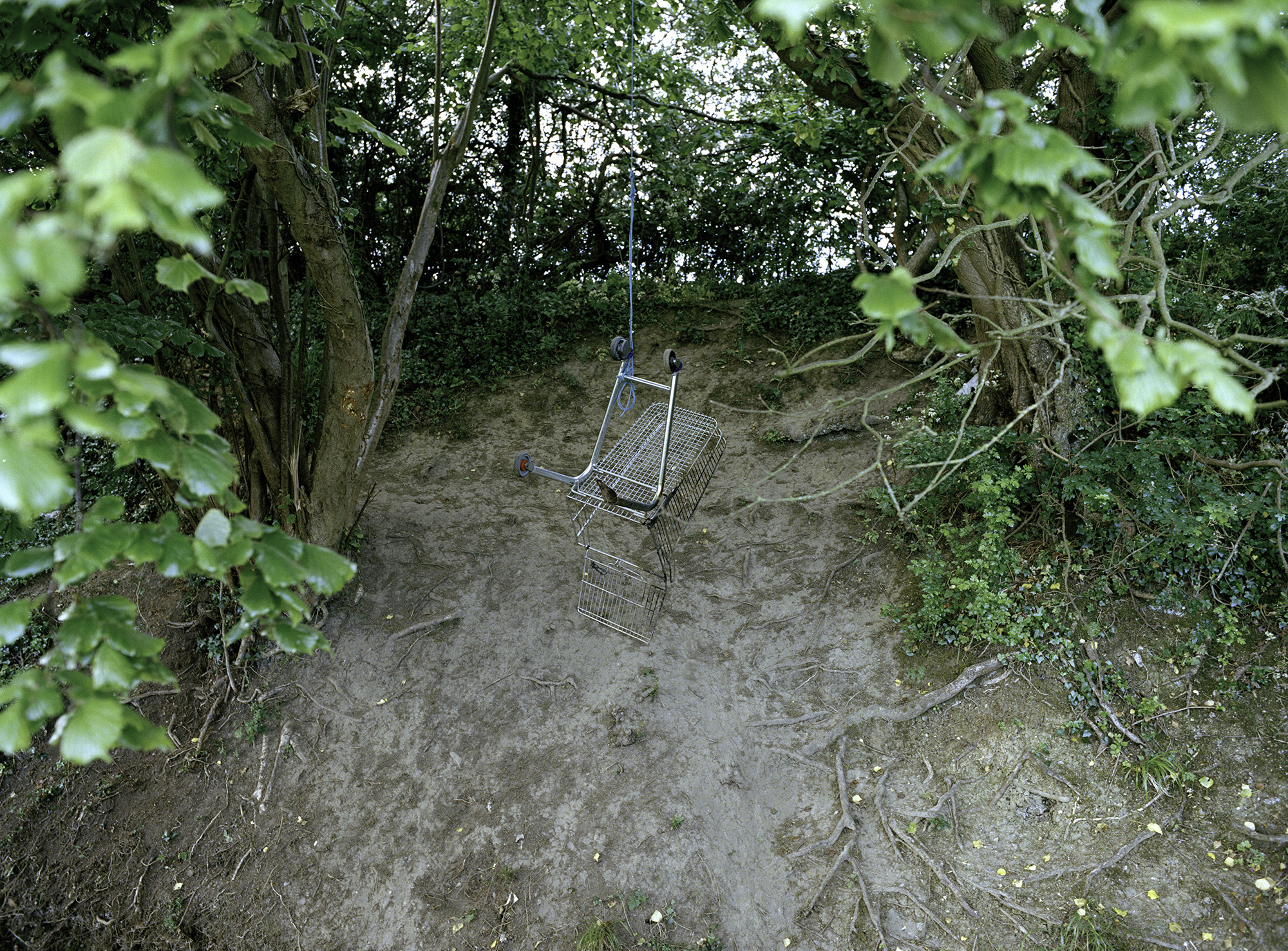
The Ditch is both hilarious and sad. It is perhaps my favourite of the images featured in this article. The initial reaction is one of confusion as to why on Earth anyone would dangle a shopping trolley upside down over a ditch, but then I remember all the daft things that I did as a young man. The picture speaks eloquently of that lunacy of youth. Now, I never decided to summarily execute a rogue shopping trolley for crimes against not veering off in random directions at any given moment, but I do have slightly hazy recollections about drunkenly careering down one of the few hilly streets of Colchester with my backside jammed into the trolley and my legs in the air at the conclusion to yet another raucous Saturday night out with the lads. I might be overthinking, but the image is also tinged with sadness. The now “dead” trolley speaks of the fact that those crazy days of youth are now gone forever.
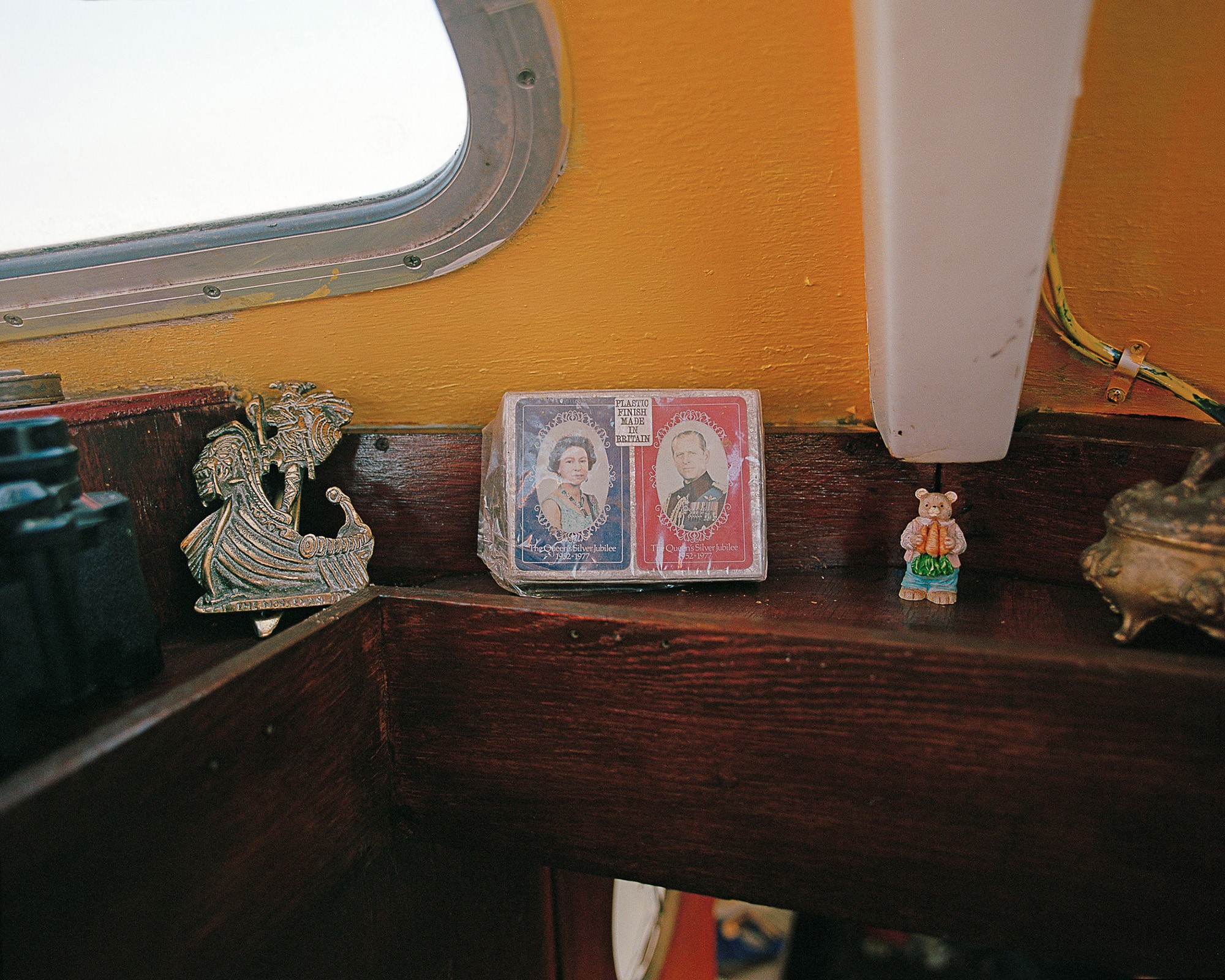
Plastic People also makes me smile. Nostalgia abounds here. I must admit that I am impressed with the ability of the owner to keep a set of 1977 Silver Jubilee playing cards pristine in its wrapper for over forty years! I can remember huge quantities of tat such as this doing the rounds during 1977. This included the hideous tasting red, white, and blue Silver Jubilee ice lolly. Despite the somewhat dingy nature of what I assume to be an aging caravan, the colours here really make the picture.
I also find the slightly out of place bear on the right interesting. Curiously, he seems to have a xenomorphic carrot bursting out of his chest (or is he just holding three carrots?). I find myself wondering if this is any less fatal than the eponymous Alien. Either way, I suspect the carrot is slightly less likely to spend the rest of its existence terrorising the caravan’s occupants.
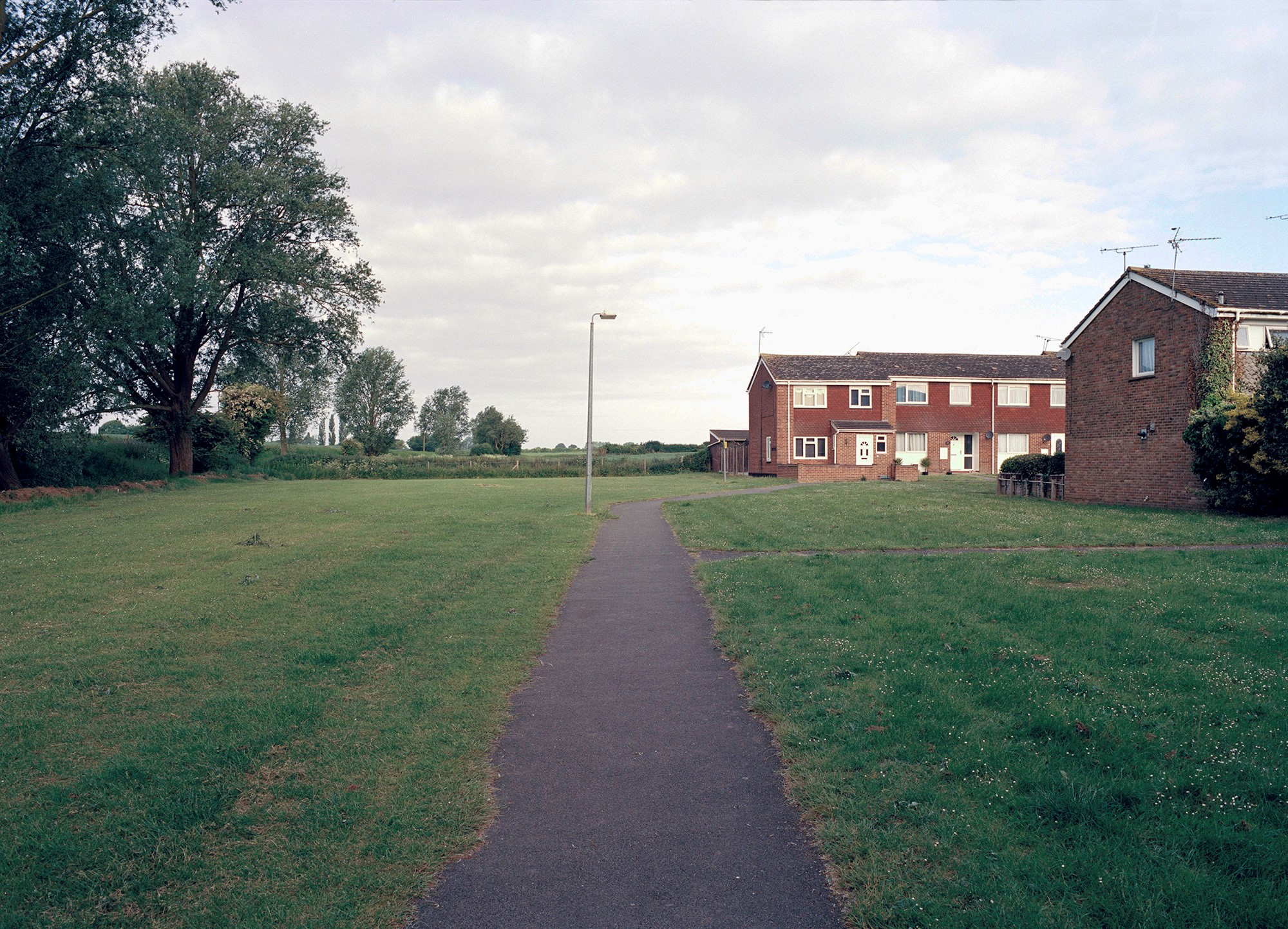
Humber Road is a beautifully composed image that is rich with nostalgia and possibility. In my mind, it is immediately 1985 and I am walking home from school. The more recent vintage of the picture is only given away by the almost unnoticeable satellite dishes on three of the houses. The mundanity of suburban life is here. These houses could be anywhere in Essex, or even England in general. Yet, there is something quite wonderful about the setting of these otherwise boring buildings. The viewer can follow the path and go home for tea, or perhaps they can veer off and head into the fields and trees to explore. I know which choice I want to make!
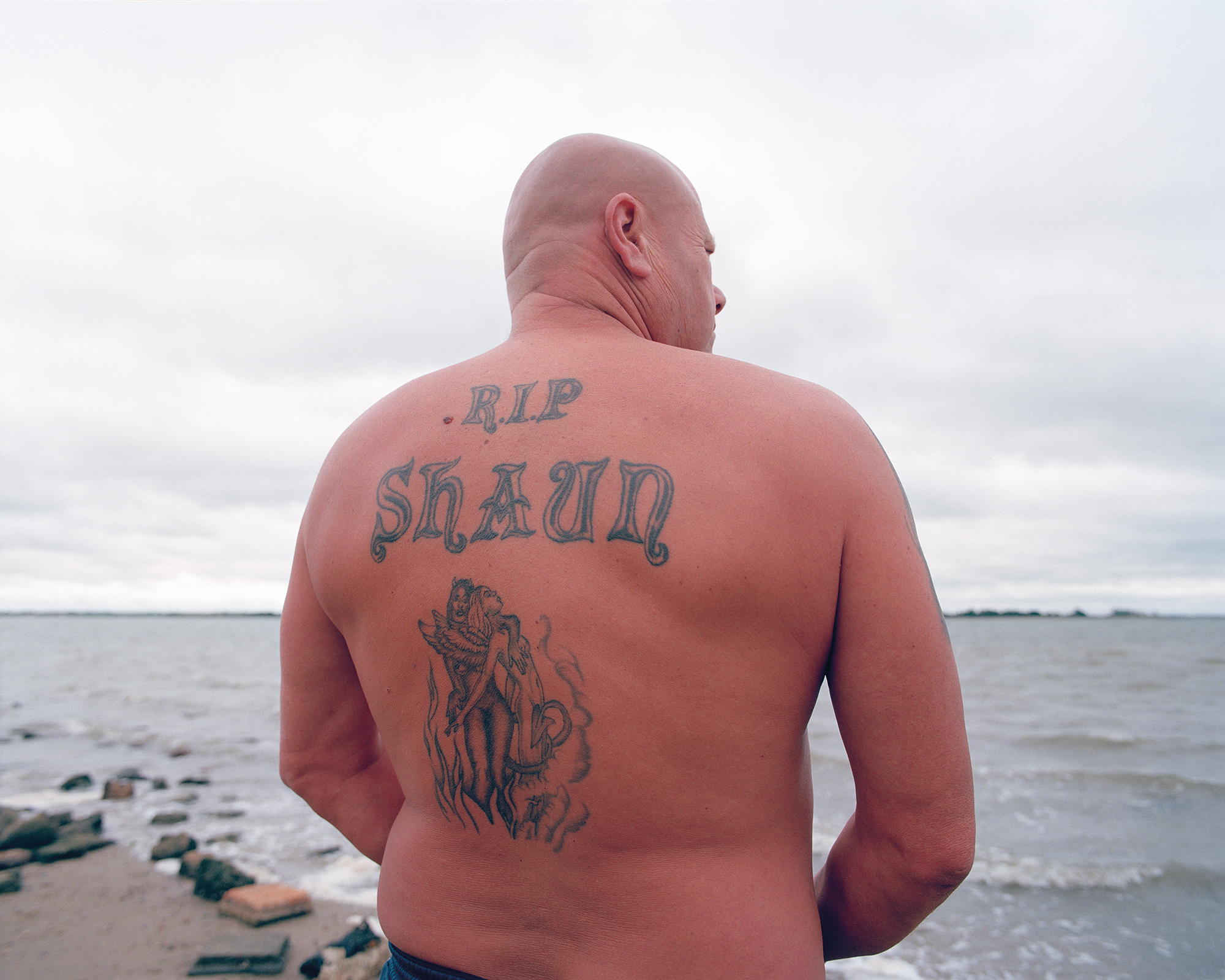
My Brother is both sad and absurd. It is a finely observed image that allows us to make all sorts of inferences about the man it features. It leaves me wondering about so many things. From the title we know that Shaun is the deceased brother of the photograph’s subject. To me, the “R.I.P. Shaun” is a touching, if somewhat over-the-top, memorial to his lost family member. However, the tattoo of the devil and angel, both naked, seems completely out of place and somewhat bizarre. I find myself wondering if the tattoos were made separately or together. If they were made together, what motivated such a memorial? I also cannot but help continually glancing at the rather worrisome looking mole to the left of the R. One hopes the subject got it checked out. The viewer leaves the photograph wondering what happened to Shaun and whether the subject himself has ever found peace and acceptance.
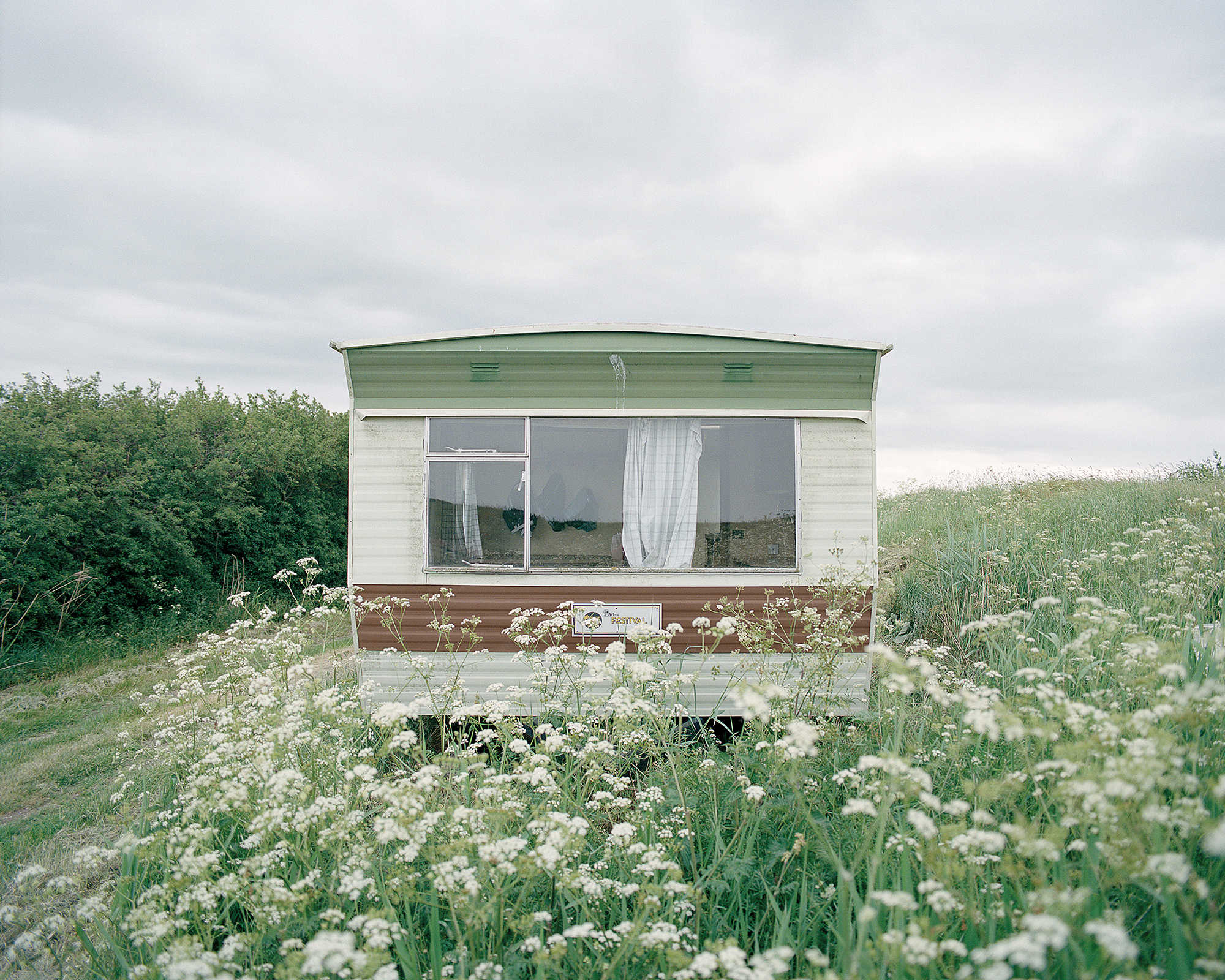
The beautifully subtle palette of Off Grid is a lovely thing to behold. The image is understated yet packed with possible meaning and interpretation. For me, it partly recalls childhood caravan holidays near the Essex coast. My grandparents owned a caravan in a fading beachside park near the village of St Osyth. The village itself contains an extraordinary 12th century priory, which is well worth a visit for any tourist who finds themselves in Essex. The beach can be safely skipped.
I also find myself asking what on Earth the caravan is doing just stuck in a field. The title also seems very appropriate. There is no power connection in sight. What about the water supply? What about the sewage system? You can see clothes inside, but who lives there? I also wonder if it is the same caravan that features the Silver Jubilee playing cards. The vehicle is clearly older than it appears initially. The paint is peeling and moulding. This is a fascinating photograph.
Taking Tom McGahan’s photographic tour around Essex has been nostalgic, compelling, and great fun. These photographs have captured a side to my home county that is not immediately obvious or representative of the first thoughts that spring to mind when it comes to the place. Yet, they are a far better portrait than the ones found in ridiculous, low rent reality television programmes. Whilst it is true that the work may have some extra resonance for me as I am a native of Essex, my appreciation for what McGahan has achieved goes far beyond just geographic relations. The work is consistently beautifully and subtly made, and I am convinced that it deserves a wider audience. I hope that I find you, dear reader, in agreement with me on this matter.
TOM McGAHAN



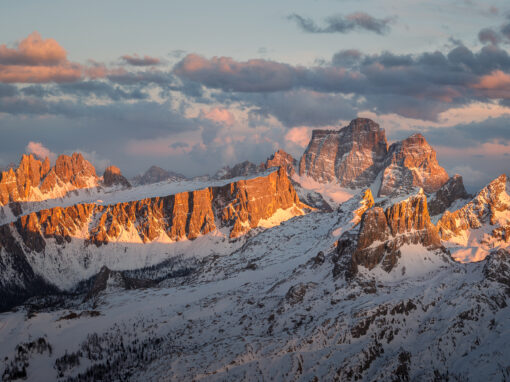
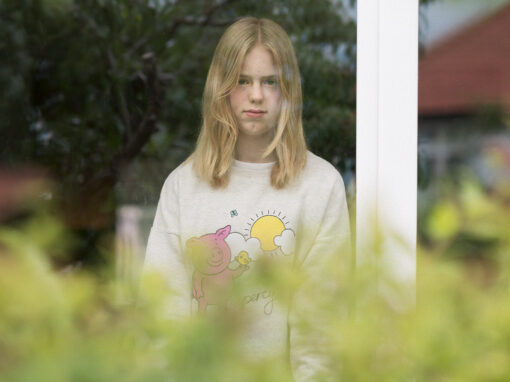
Agnes
March 6, 2023 at 22:41
Brilliant Thomas really liked your pictures and his great comments on you. Well done 🙏🙏🙏🙏♥️♥️♥️🙏